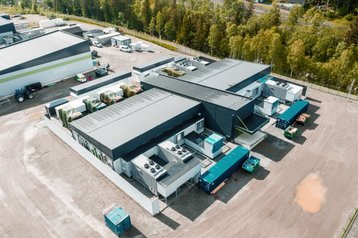Deciding when and how to add data center capacity to accommodate growth and increased demand for IT services, requires detailed consideration of several options. If one wants to manage and operate one’s own critical infrastructure, the choice will often come down to whether one refurbishes and upgrades an existing facility, or builds a new one.
The decision can be further complicated by the availability of prefabricated data center modules, comprising pre-engineered, pre-assembled and pre-tested physical infrastructure systems delivered as standardized modules to the user’s site.
Prefab solutions can encompass one or all of the key data center functions including IT racks, cooling, uninterruptible power supplies, distribution and switchgear, and in many cases, ranging from the smallest micro data center and edge computing solutions, to entirely self-contained prefabricated infrastructure modules, delivered on the back of a truck to any piece of land outside of a companies premises. A great example of the latter includes prefab modules recently deployed at Green Mountain AS on behalf of Volkswagen.
The cost considerations
The benefits of opting for a prefabricated approach are many and varied. Building a new facility from scratch at a green-field site inevitably involves larger up-front capital expenditure (capex) as one must install extra capacity up front to allow for future growth. By contrast, the prefab modular approach makes it easier to add capacity as needs require it, matching capex far more closely to the actual IT requirements.
Modules that are pre-assembled and tested by the vendor need much less bespoke design and integration work performed onsite, resulting in lower labor costs and faster deployment. Furthermore, much of the assembly can be performed at the factory during the same time as any preparation takes place at the customer site, further reducing deployment time.
Other financial advantages of the prefabricated approach include more accurate predictions of both deployment cost, given the simplification of assembly and integration, and operational efficiency due to the fact that a manufacturer can pre-test a module before deployment, ensuring it meets the expected and specified operational metrics. Greater financial flexibility is also possible as prefabricated infrastructure can be classified as equipment rather than a building, which can result in both taxation and insurance benefits.
To prefab, or not to prefab?
It is not always the case, however, that a prefabricated data center is more cost-effective than a traditional build. If an existing facility has unused capacity, which is already well supported by power and cooling resources, the need for highly integrated support infrastructure becomes redundant. An external prefabricated facility, say one deployed in a car park, may also be exposed to greater physical risk, from weather and malevolent intruders, than an internal well-guarded facility, so additional security or continuity considerations may be required.
Finally, there is also the risk that transportation costs for a large prefabricated data center may be prohibitive, or that accessibility for service personnel may be difficult in cramped conditions, leading to higher operating costs. However, should the manufacturer have a global supply chain that can efficiently service the customers' region, this should not be an issue.



